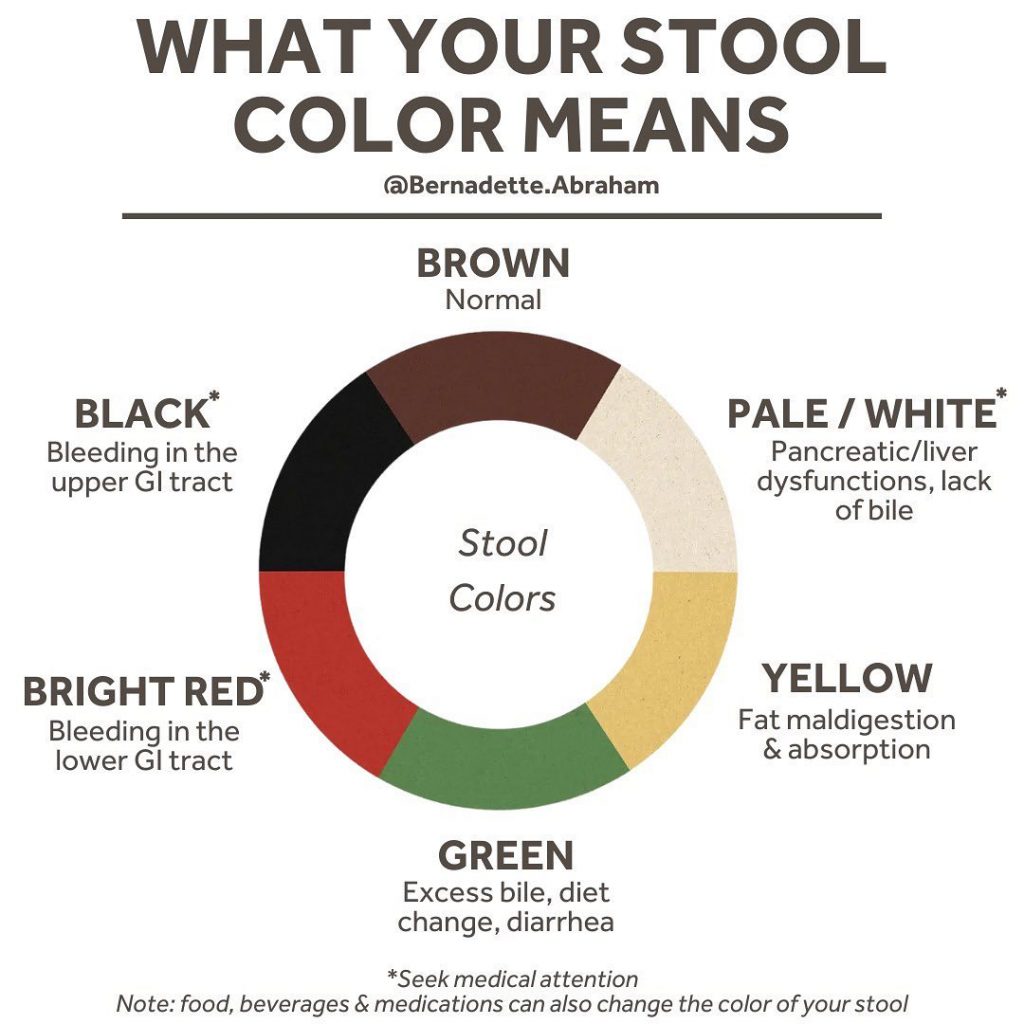As gross or taboo as it may seem, poop, stool, #2, or whatever you like to call it, is an essential part of our physiology. We all do it (hopefully), and it provides a significant amount of information about our gut health, and therefore our overall health.

👉🏻So step 1, start looking! Ask your kids to look too; and to tell you if it’s not brown.
👉🏻Step 2. Know the warning signs.
⚠️🖤❤️Black and bright red could indicate internal bleeding, so do seek medical attention. But there are some other less scary reasons for it:
•large amounts of black foods, iron supplements, and anti-diarrheal meds can color it black
•beets, tomato juice, cherries, and other dark red foods can color it red
⚠️🤍Light colored stool also warrants medical attention. It can indicate that bile isn’t flowing properly through the GI tract, which is what colors the stool. Biliary tract congestion, gallstones, pancreatic and liver disease? Check it! However, large doses of medications can also be at play.
💚Green: our liver makes bile, a green fluid that helps us digest fats (one of its roles).
A fast transit time (i.e. loose stool & diarrhea) won’t have time to change the stool color to brown (bilirubin – the breakdown of hemoglobin in bile, colors the stool brown.) However, iron supplements, green leafy foods, and green food dyes can also make it green.
💛🧡Yellow/orange stool that also floats, can indicate fat maldigestion and malabsorption. Parasites, gallbladder removal (therefore less concentrated amounts of bile flow), biliary tract congestion, pancreatic dysfunctions, damaged intestinal lining (i.e. celiac), etc., can be at play.
See how much information can be gleaned from just the color of our stool?!
👉🏻I discuss this in DETAIL in my 𝗚𝘂𝘁 𝗛𝗲𝗮𝗹𝘁𝗵 𝗠𝗮𝘀𝘁𝗲𝗿𝗰𝗹𝗮𝘀𝘀 included in the 𝗕 𝗕𝗲𝘁𝘁𝗲𝗿 𝗺𝗲𝗺𝗯𝗲𝗿𝘀𝗵𝗶𝗽, along with tons of practical solutions.
If you have any comments or questions, please leave them below.

Leave a Reply